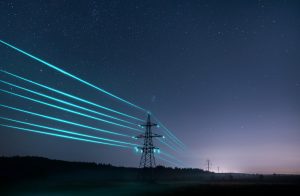There is no question transient electrical surges have a major impact on corporate bottom lines; but even more important is the risk they can pose to safety, with their potential to knock critical safety systems out of service. This is why the 2014 National Electrical Code (NEC) added the requirement that surge protective devices (SPDs) be installed in or on all emergency systems switchboards and panelboards. However, the effectiveness of these devices depends on how – and where – they’re installed, issues I’ll be covering in this post.
Surges pack quite a punch
Transient electrical surges pass even more quickly than the blink of an eye, but their costs can be enormous. The Insurance Institute for Business & Home Safety estimates these events, which can contain thousands of volts and thousands of amps, cost businesses $26 million annually in lost time, equipment repair and replacements. The kind of equipment most likely to be damaged, including servers, programmable logic controllers and motor control systems, is also among the most vital to facility operations.
Today, much of the sophisticated building safety and mechanical equipment considered vital for occupant safety faces similar risks, which is why the NEC now mandates SPDs for the switchboards and panelboards serving them. Such systems include those responsible for:
- Safe egress
- Panic control
- Building safety (including alarm and communications)
- Building mechanical operations (including elevators and ventilation)
- Preventing catastrophic industrial process failure
How SPDs do their job
SPDs protect connected systems by diverting damaging voltage and currents away from downstream equipment. They are installed in parallel with respect to the load and become the path of least resistance when a voltage surge occurs. SPDs won’t shunt 100 percent of the initial surge energy away from connected systems, but if they are installed correctly in the proper location, any surge remnant will fall well below damaging levels, see Figure 1.
Figure 1. How does an SPD work?
Identifying the proper location is a critical element in ensuring SPDs operate as intended. The IEEE Emerald Book suggests a cascading approach for best protection, beginning with the facility’s service entrance, see Figure 2. Although 80 percent of surges originate within a building, externally generated surges – such as those resulting from lightning strikes – can be the most damaging. Residual voltage from these events, as well as surges resulting from internal causes, can be handled by secondary protective devices at power panels serving connected loads.
Figure 2. Cascading-LocationIntegral vs. external
SPDs can be installed as standalone units adjacent to connected panelboards or installed as integral elements within the panelboards, themselves. An assessment of available space often helps specifiers make their decisions. External installation is the only option when retrofitting panelboards, or when space inside other equipment is inadequate. However, added wall space adjacent to the connected equipment will be required for mounting.
Integral SPDs can be provided in all new equipment, including panelboards, switchboards, motor control centers (MCCs) and bus duct. They also can be retrofitted into switchboards, MCCs and bus duct. Integral SPDs, where appropriate, can offer some advantages over external devices, including:
-
- Minimized lead lengths, which can improve overall performance and protection
- Reduced footprint, versus what might be required for externally mounted equipment
- Coordinated design between the SPD and connected distribution equipment
Find a range of additional resources for consulting engineers at Design firms and consulting engineers.



